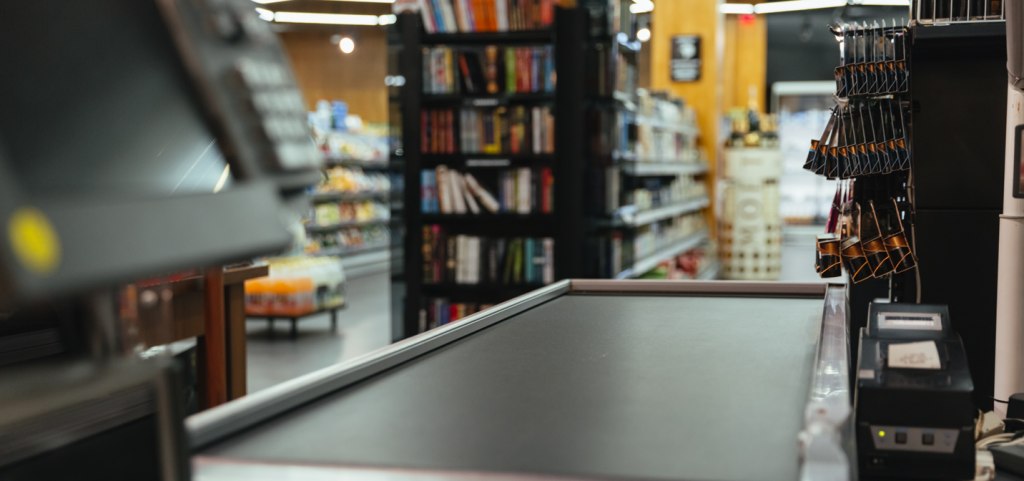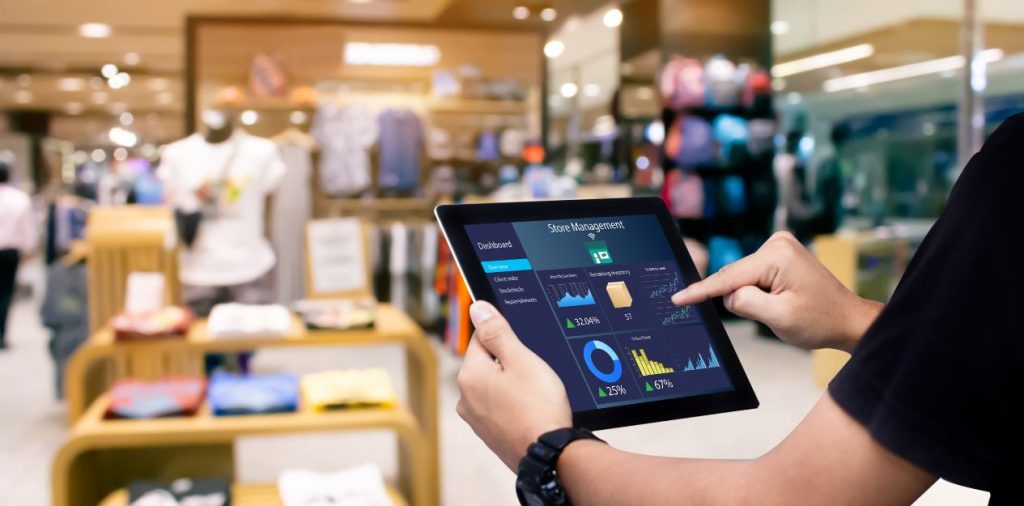Profit Maximisation: How POS Systems in Malaysia Can Help Your Business
Profit Maximization: How POS Systems in Malaysia Can Help Your Business

In today’s competitive business environment, maximizing earnings is a major objective for entrepreneurs and business owners. Every potential to improve operations and enhance income must be pursued. A Point of Sale (POS) system is one effective instrument that may help organizations reach this aim. In Malaysia, the integration of POS systems has proven to be a game changer for many businesses, revolutionizing how they run and increasing their profitability.
A POS system is the Centre for handling sales, inventory, and customer transactions. It goes beyond the standard cash register by providing a variety of features and capabilities aimed to improve operations, improve customer experiences, and produce important data insights. When properly deployed, a POS system may optimize your business in a variety of ways, resulting in better efficiency, lower expenses, and, eventually, more profits.
The goal of this blog is to investigate how POS systems in Malaysia may help businesses maximize revenues and prosper in today’s changing industry. We will go into the different advantages of deploying a POS system, examine the factors to consider when picking the proper system for your company, and give insights into successful implementation tactics. Understanding the possibilities of POS systems may enable you to make educated decisions that promote success, whether you run a retail store, a restaurant, or any other sort of business.
We will also discuss real-life case studies of Malaysian firms who have effectively integrated POS systems and seen actual results throughout this blog. We may acquire a better grasp of the influence that POS systems can have on sales, customer happiness, and overall business growth by evaluating these success stories.
We will also discuss best practice’s for using POS systems in Malaysia as we go, such as system upgrades, security precautions, and exploiting customer data. With this information, you’ll be able to make the most of your POS system, ensuring that it stays a useful asset to your company in the long run.
To summaries, businesses may unleash considerable potential for optimizing’s processes, improving profitability, and keeping ahead of the competition by embracing the power of POS systems in Malaysia. So, let’s get started and look at how you may maximize your revenues by strategically implementing a POS system adapted to your individual business needs.
Understanding POS Systems in Malaysia

Let’s develop a clear idea of what a POS system is and its main function before we go into the advantages of POS systems for Malaysian businesses.
A Point of Sale (POS) system is a set of hardware and software that enables companies to control and streamline sales transactions. It acts as the main location where clients pay for goods and services. A cash register or computer, barcode scanners, receipt printers, and payment terminals like card readers are some of the physical elements of a POS system. The software element offers the user interface for handling transactions, controlling inventories, and producing reports.
A POS system’s main objective is to increase overall operational efficiency and streamline the sales process. Businesses may focus on providing outstanding customer experiences and increasing their earnings by automating processes like inventory management, order processing, and transaction tracking.
Overview of the Features and Functionalities of Modern POS Systems

In Malaysia, contemporary point-of-sale systems are outfitted with a broad range of features and functions that go beyond simple transaction processing. Here are some crucial components that are frequently present in cutting-edge POS systems:
- Inventory Management: POS systems enable businesses to track and manage their inventory in real-time. This includes monitoring stock levels, receiving alerts for low inventory, and automating reordering processes to ensure products are always available when needed.
- Sales Processing: POS systems provide a seamless and efficient sales process, allowing businesses to scan barcodes, calculate prices, apply discounts or promotions, and process different payment methods, including cash, credit/debit cards, and mobile payments.
- Customer Relationship Management (CRM): Many POS systems include CRM capabilities, enabling businesses to gather customer information, track purchase history, and offer personalized experiences. This data can be used to implement loyalty programs, targeted marketing campaigns, and provide superior customer service.
- Reporting and Analytics: POS systems generate detailed reports and analytics that offer valuable insights into sales performance, popular products, and customer trends. These data-driven insights help businesses make informed decisions, identify areas for improvement, and capitalize on opportunities for growth.
- Integration with E-commerce Platforms: With the rise of online shopping, integrating POS systems with e-commerce platforms has become crucial for businesses. This integration ensures seamless inventory synchronization, centralized order management, and consistent customer experiences across both online and offline channels.
Explanation of How POS Systems Integrate with Various Business Operations

The capacity of POS systems to interact with different corporate activities, reducing procedures and improving overall efficiency, is one of its main advantages. POS systems may be integrated with various business components in the following ways:
- Inventory Management: POS systems seamlessly sync with inventory databases, automatically updating stock levels after each transaction. This integration eliminates the need for manual inventory tracking, reduces the risk of overselling or stockouts, and enables businesses to make data-driven decisions regarding stock replenishment.
- Accounting and Finance: POS systems can be integrated with accounting software, ensuring that sales data is accurately recorded and automatically transferred to the accounting system. This integration saves time and minimizes the risk of errors that can occur through manual data entry.
- Customer Management: POS systems can integrate with CRM software, allowing businesses to centralize customer information, track purchase histories, and deliver personalized experiences. This integration ensures that customer data is up-to-date and easily accessible, empowering businesses to build stronger relationships with their customers.
- Analytics and Reporting: POS systems generate detailed reports and analytics that provide valuable insights into sales performance, product trends, and customer behavior. These reports can be integrated with analytics tools or business intelligence software, enabling businesses to dig deeper into the data and extract actionable insights.
POS systems in Malaysia develop become a potent tool by smoothly interacting with diverse corporate processes.
Benefits of POS Systems for Malaysian Businesses
Streamlining Sales Processes
- Efficient Inventory Management and Tracking
- Automated Sales and Transaction Processes
- Simplified Order Management and Fulfillment
Enhancing Customer Experience
- Quick and Convenient Transactions
- Personalized Customer Interactions
- Loyalty Program Management and Customer Data Collection
Generating Data Insights
- Real-time Analytics and Reporting
- Sales and Performance Tracking
- Identifying Trends and Opportunities for Growth
Implementation and Integration of POS Systems
One of the most important steps towards streamlining operations and raising profits in your Malaysian company is the implementation and integration of a POS system. An efficient implementation guarantees a seamless transition and efficient use of the system’s capabilities. The main components of implementing and integrating a POS system will be discussed in this section.
Planning and Preparation for System Implementation
- Assessing Business Needs and Requirements: Before implementing a POS system, it’s essential to assess your business needs and requirements. Consider factors such as the size of your business, the nature of your products or services, and the specific features you require from a POS system. This assessment will help you select a system that aligns with your business goals and meets your operational needs.
- Setting Up Hardware and Software: Once you have selected a suitable POS system, ensure that the hardware and software components are properly set up. This may involve installing the necessary software on computers or mobile devices, connecting barcode scanners and receipt printers, and configuring payment terminals. Collaborate with the POS system provider or seek professional assistance to ensure a smooth installation process.
Staff Training and Adoption Strategies
- Staff Training: Proper training is crucial for the successful implementation and adoption of a POS system. Ensure that your staff receives comprehensive training on how to use the system effectively. Cover topics such as processing sales, managing inventory, generating reports, and utilizing additional features like customer management or loyalty programs. Provide ongoing training and support to address any questions or challenges that arise during the transition period.
- Change Management and Adoption Strategies: Introducing a new POS system may require changes in workflow and processes. Implement change management strategies to help your employees adapt to the new system smoothly. Clearly communicate the benefits of the POS system, address any concerns or resistance, and foster a positive attitude towards the transition. Encourage feedback from employees and involve them in the decision-making process to promote a sense of ownership and engagement.
Integration with Other Business Tools and Platforms
- Accounting and Financial Systems: Integrating your POS system with accounting and financial software streamlines financial processes. Ensure that your POS system can seamlessly transfer sales data to your accounting software, minimizing manual data entry and reducing the risk of errors. This integration facilitates accurate financial reporting, simplifies tax calculations, and improves overall financial management.
- E-commerce Platforms: If you have an online store or plan to expand into e-commerce, integration between your POS system and e-commerce platforms is essential. This integration enables centralized inventory management, synchronized product listings, and automated order processing. Customers will enjoy a consistent experience across online and offline channels, and you can efficiently manage inventory and fulfill orders from a single system.
- Customer Relationship Management (CRM) Tools: Integrating your POS system with CRM tools allows for a unified view of customer data. This integration enables businesses to track customer interactions, preferences, and purchase histories in one place. With a holistic understanding of customer behavior, you can tailor marketing campaigns, provide personalized recommendations, and nurture customer relationships more effectively.
You can maximize the advantages of your POS system and create a fluid workflow across many elements of your Malaysian business by carefully planning the deployment, giving thorough training, and connecting the POS system with other business tools.
In conclusion, successfully implementing and integrating a POS system is essential for Malaysian companies to improve operations and raise profitability. You may use the full potential of your POS system and improve overall efficiency and profitability by carefully planning the deployment, offering employee training, and connecting the system with other business tools. The real-world case studies of Malaysian companies who successfully deployed POS systems and realized the advantages are shown in the following section.
Case Studies: Successful Implementation of POS Systems in Malaysia
Examples from real-world situations can provide light on how POS systems were successfully implemented in Malaysian companies. Let’s look at a few case studies that show how POS systems have improved the operations, effectiveness, and profitability of these businesses.
Case Study 1: Retail Store Transformation
VI. Case Studies: Successful Implementation of POS Systems in Malaysia
Real-life examples provide valuable insights into the successful implementation of POS systems in Malaysian businesses. Let’s explore a few case studies that demonstrate how POS systems have positively impacted their operations, efficiency, and profitability.
Case Study: Retail Store Transformation
Company Name: Trendy Threads
Background: Trendy Threads, a popular fashion retail store in Kuala Lumpur, faced challenges with inventory management, sales tracking, and customer engagement. They decided to implement a cloud-based POS system to streamline their operations and improve the overall customer experience.
Implementation and Integration: Trendy Threads selected a POS system that offered features such as real-time inventory tracking, customer management, and sales analytics. They integrated the system with their existing e-commerce platform, allowing for seamless inventory synchronization and centralized order management.
Results and Benefits:
- Improved Inventory Management: The POS system provided accurate real-time inventory data, reducing stockouts and overstocking. Trendy Threads could easily track product availability, automate reordering, and optimize their inventory levels, resulting in reduced carrying costs and improved sales.
- Enhanced Customer Experience: With the integrated CRM capabilities, Trendy Threads personalized customer interactions, offering tailored recommendations and targeted promotions based on customer preferences and purchase history. This led to increased customer satisfaction and repeat business.
- Data-Driven Decision Making: The sales analytics provided by the POS system helped Trendy Threads gain insights into their top-selling products, peak sales periods, and customer trends. This data-driven approach enabled them to make informed decisions regarding product assortment, pricing strategies, and marketing campaigns, resulting in improved profitability.
Best Practices for Utilizing POS Systems in Malaysia

It’s crucial to use a POS system according to best practice’s in order to get the most out of it and guarantee that it works well for your Malaysian company. You may improve security, use consumer information, and optimize operations by putting these practice’s into precise. Let’s look at some of the most important best practice’s for using POS systems in Malaysia.
A. Regular System Updates and Maintenance
- Stay Up-to-Date with Software Updates: POS system providers often release software updates that include bug fixes, performance improvements, and new features. Regularly update your POS system to take advantage of these enhancements and ensure optimal functionality.
- Backup and Data Protection: Regularly back up your POS system data to protect against potential data loss or system failures. Implement secure data storage practices and consider cloud-based backup solutions for added security and accessibility.
B. Robust Security Measures
- Secure User Access and Permissions: Implement user access controls and assign appropriate permissions to ensure that only authorized personnel can access sensitive data and perform critical operations within the POS system. Regularly review and update user access privileges as needed.
- PCI Compliance: If your business handles payment card information, ensure that your POS system is Payment Card Industry Data Security Standard (PCI DSS) compliant. Adhering to PCI standards helps protect customer payment data and maintain trust.
C. Leveraging Customer Insights
- Data Analysis and Reporting: Regularly analyze the data generated by your POS system to gain insights into customer behavior, sales patterns, and product performance. Utilize built-in reporting tools or integrate with external analytics software to make data-driven decisions and identify opportunities for growth.
- Personalized Marketing and Promotions: Utilize customer data captured through your POS system to create personalized marketing campaigns and promotions. Leverage features like customer segmentation, targeted offers, and loyalty program integration to engage customers and drive repeat business.
D. Ongoing Staff Training and Support
- Continuous Training and Skill Development: Provide ongoing training to your staff to ensure they are proficient in using the POS system and its latest features. Regular training sessions and refresher courses will help maximize efficiency and minimize errors during daily operations.
- Dedicated Support Channels: Establish dedicated channels for staff to seek assistance and troubleshoot issues related to the POS system. This can include a help desk, online support portal, or direct contact with the POS system provider. Promptly address any system-related concerns to minimize downtime and disruptions.
By putting these best practice’s into precise, you can maximize the efficiency of your POS system and improve the results for your Malaysian company. The long-term success of your POS deployment will depend on regular system upgrades and maintenance, strong security measures, using customer insights, and continuing employee training and support.
For businesses in Malaysia, a POS system is a useful tool that enables faster operations, enhanced customer experiences, and data-driven decision-making. You can maximise the advantages of your POS system, improve security, and use client information for ongoing success by adhering to these best practises.
The main ideas covered in this blog post will be summarized in the last part, and readers will be urged to use a POS system in their Malaysian companies.
BACK TO BLOG PAGE
